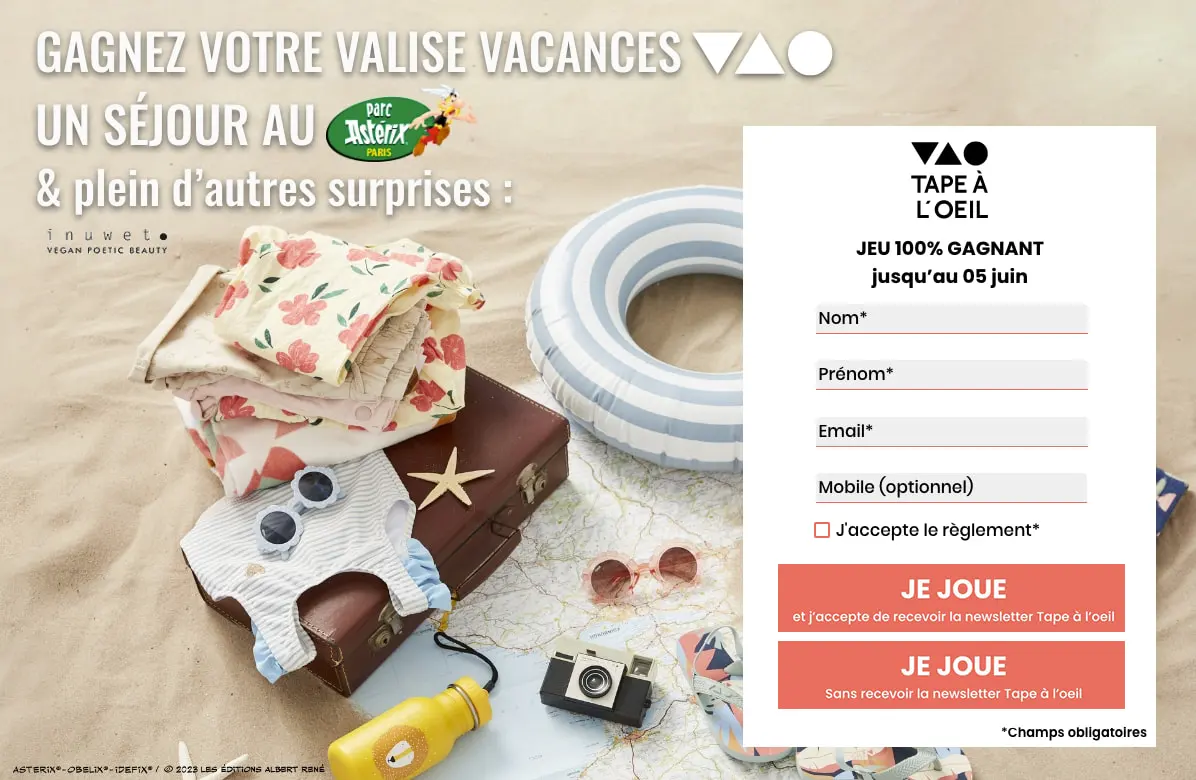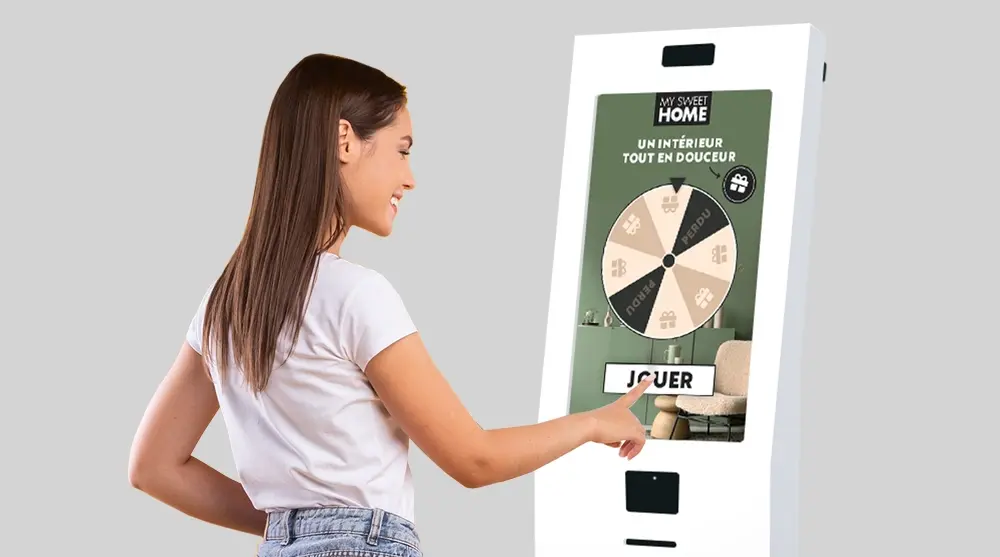
Playable marketing: how to gamify and optimise the consumer buying proces
A brand that can maintain its profitability over the long term is a brand that knows how to engage its customers. Engagement (i.e. the depth, quality and frequency of interactions between a company and its audience) is the primary indicator of commercial performance.
It’s engagement that boosts a brand’s visibility, converts prospects into customers and, above all, builds loyalty. Engaged customers (particularly through gamification mechanisms) are more likely to buy regularly from the same brand, recommend it to friends and family, etc.
To activate the neurons in our brains and engage their customers effectively, brands can rely on Playable Marketing. By taking up the elements traditionally associated with games (points, competition, progression from one level to the next), brands can optimise the purchasing journey and boost their revenue.
In this article, we explain how you can make the most of the advantages of playable marketing at every stage of your customer journey!
What is playable marketing and what impact does it have on buyers?
Whether in education, healthcare or marketing, organisations are all looking for effective tools to capture and maintain the attention of their audience. Gamifying the way they speak to their audiences is a highly relevant strategy for achieving this objective.
Why ? It’s all in our brains. Lors de la phase de découverte, lorsqu’un consommateur commence à se familiariser avec une nouvelle marque, les éléments empruntés au jeu permettent par exemple d’améliorer la rétention d’information.
Neuroscience has shown that gamification acts as a catalyst for hippocampal memory, which encourage the store of new data in long-term memory. We also know that our brains are more likely to retain information when it is associated with positive experiences.
During the consideration phase, when consumers are comparing a brand’s offer with that of its competitors, gamification can play the role of a differentiating element. The fun aspect, as well as the opportunity to unlock rewards, strengthens customer commitment and encourages them to make a purchase.
In fact, Gamification releases dopamine, a neurotransmitter that creates positive associations when we win something or achieve a goal. The feeling of happiness and satisfaction increases. We are therefore much more motivated to buy from a brand that offers a gamified buying experience. Playable marketing is therefore a powerful loyalty-building lever .
By increasing the number of interactions between the customer and the company, gamified marketing campaigns also enable more comprehensive data to be collected. This information gives the brand a much more detailed understanding of the needs, preferences and motivations of its audience. The brand can use this information to optimise the buying process, improve the customer experience and even perfect its products.
Creating an engagement loop through gamification
One of the key mechanisms in gamification is the engagement loop. Les utilisateurs sont motivés à effectuer une action (e.g subscribing to a newsletter, buying a new product or leaving a review) because this action unlocks a reward. With each new action, customers can access even more interesting prizes. This strengthens their bond with the brand and their feeling of belonging to its community. Gamification also activates the reward circuit. it makes customers want to prolong their interaction with the brand (in particular by continuing to consume) in order to conitnue to reap the benefits.
The reward, but also the recognition offered by the brand (via a badge for its most loyal customers or access to a VIP club) becomes a motivating factor in itself. And the commitment loop starts all over again.
This is why Playable marketing is not just about converting new customers. More importantly, it builds loyamty among customers who have already bought from the brand and boosts their Lifetime Value. brands that make good use of gamification to optimise their customer experience and their buying journey will see their incomes increase significantly.
For example, with its gamified application Run Club, Nike has increased its cusotmers’ sense of belonging. It encourages more frequent interactions and a higher re-pruchase rate. The same goes for Starbucks, whose loyalty program consists of accumulating points to move up to higher levels. This program has generated 40% of the company’s revenues and a 7% increase in sales in 2019.
Best practices for designing a gamified shopping experience
Interactive marketing formats and the gamification of marketing content enable companies to optimise their purchasing paths. However, simply introducing game elements is not enough to move a prospect up the conversion funnel.
Here are the best practices to keep in mind to maximise conversions thanks to Playable marketing.
Getting to know your customers
The first step in designing a gamified shopping experience is to understand your target audience, what they are looking for and what motivates them. This in-depth knowledge is facilitated precisely by gamification (as a tool for data collection and enrichment)). Les marques peuvent en effet récolter des données qualifiées issues de formulaires de participation, ou directement via l’expérience de jeu (par exemple en faisant choisir à son audience son produit préféré etc)
Using the data at its disposal, the company will be able to adapt its interactive animations to the needs of its customers. It’s also a good time to segment the data collected in order to personalise and boost the performance of its campaigns .
Setting clear objectives
The brand will then need to determine which stage of the purchaising journey it wishes to reinforce. It is moe relevant and affordable to determine the strategic contact points where gamification will enable the company to boost its results.
Depending on which part of the conversion funnel is most problematic (awareness, consideration, purchase, loyalty), the company can determine which marketing games to offer and when.
Incorporate relevant game elements for each stage of the customer journey
When a brand adds gamified elements to its shopping journey, it is crucial that they make sense in the context of the customer experience. For example, introducing a points and reward system is relevant in the post-purchase phase to build consumer loyalty.
On the other hand, interactive formats such as competitions and instant wins are more effective at the moment of discovery and consideration.They will help to boost brand visibility and convert new prospects more effectively.
Enhancing the added value of gamified elements
The final step is to regularly evaluate the effectiveness of gamification of the pruchasing journey. Tracking precise metrics (conversion, lead generation, retetention) will enable the company to optimise its shopping experience and achieve its objectives.
Conclusion
By following these best practices, you can create a gamified customer experience that is both more engaging for your customers and more effective for your brand. We provide a complete catalogue of interactive formats to target buyers at every stage of your customer journey. Whether you want to engage your audience, convert prospects or build customer loyalty you’ll find a gamified animation to meet your needs!















